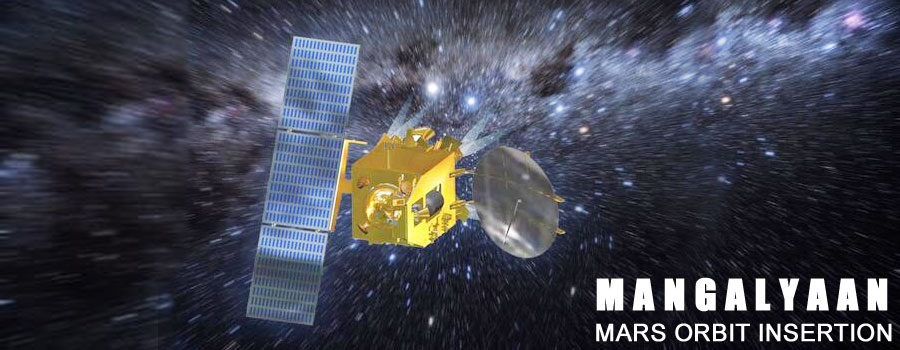
Bangalore: A day after the successful test firing of the main engine inoperative, scientists and the Indian Space Research Organization (ISRO) is all set to ensure ambitious Mars Orbiter Mission of India, which has already traveled 662 million kilometers, enters the orbit of the red planet on Wednesday morning as scheduled.
If the Mars Orbiter Mission, MOM affectionately nicknamed, is based on precise orbit, India will join the USA, the European Space Agency and the former Soviet Union in the elite club of Mars explorers - a feat which is also likely to give a boost to the country's space program.
The next few hours are crucial as ISRO ordered a series of complicated maneuvers to place the spacecraft in its designated orbit around Mars. The complicated maneuver involves slowing the ship now moves to stun rate to be captured into orbit around Mars, the success of which would make India the first country to go to Mars in the maiden attempt.
"We have to excel," said ISRO chief K Radhakrishnan, expressing the hope that the mission would "establish the capabilities of India's orbit a spacecraft around Mars."
Prime Minister Narendra Modi also reached Bangalore on Tuesday night, not wanting to miss the historic event when the spacecraft enters India early Mars orbit on September 24.
He will witness the event from the mission control center network telemetry, tracking and State Organization India Space Research (ISRO) in Bangalore command (ISTRAC).
"Although the exercise orbit insertion begins at 4.17 am, the Prime Minister will be in the center of mission control from 6.45 in the morning to see the crucial operation when the main engine of the ship fired at 7:17 a.m. to carry through the region to enter Martian orbit by 7:53 a.m., "said an official.
The project began on November 5, 2013 from Sriharikota spaceport in the Bay of Bengal, about 80 km northeast of Chennai, won the eyes of millions who want to succeed.
Of the 51 missions, only 21 have been successful so far. China's first Mars mission called Yinghuo-1 failed in 2011 by the Russian Phobos-Grunt mission with which it was launched. First Japanese Mars orbiter, Nozomi launched in 1998, it ran out of fuel and lost. And now it's time for India to become the first Asian nation to reach Mars.
As for the success rate of these missions, the success of the Mars Orbiter Mission will be worth watching, as it will showcase the efficiency and expertise of India in this field also in his maiden attempt.
There are three more satellites already circling the planet - Mars Reconnaissance Orbiter and Mars Odyssey, and Mars Express ESA. On the surface of Mars, Curiosity and Opportunity rovers NASA are rolling through the rocky terrain.
ISRO said the spacecraft - also called Mangalyaan, meaning "ship Mars" in Hindi - is primarily meant to show the spatial high-tech skills in the country. Already, India has successfully launched a lunar satellite Chandrayaan-1, which discovered key evidence of water on the moon in 2008.
It is expected that the spacecraft to orbit the planet for at least six months in an elliptical orbit that gets within 365 kilometers (227 miles) from the planet's surface at its closest point to 80,000 kilometers (49,700 miles ) at its farthest.






















